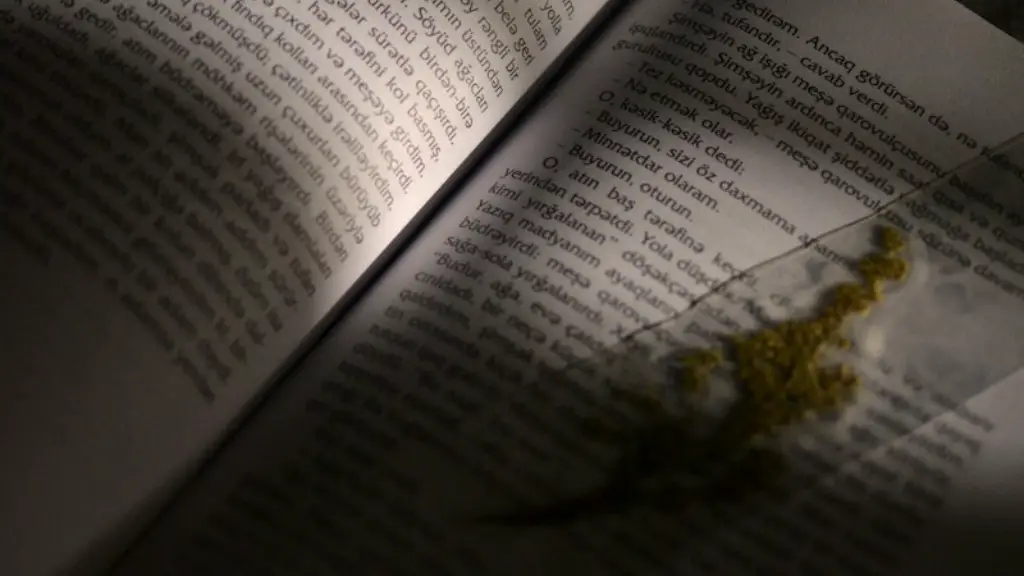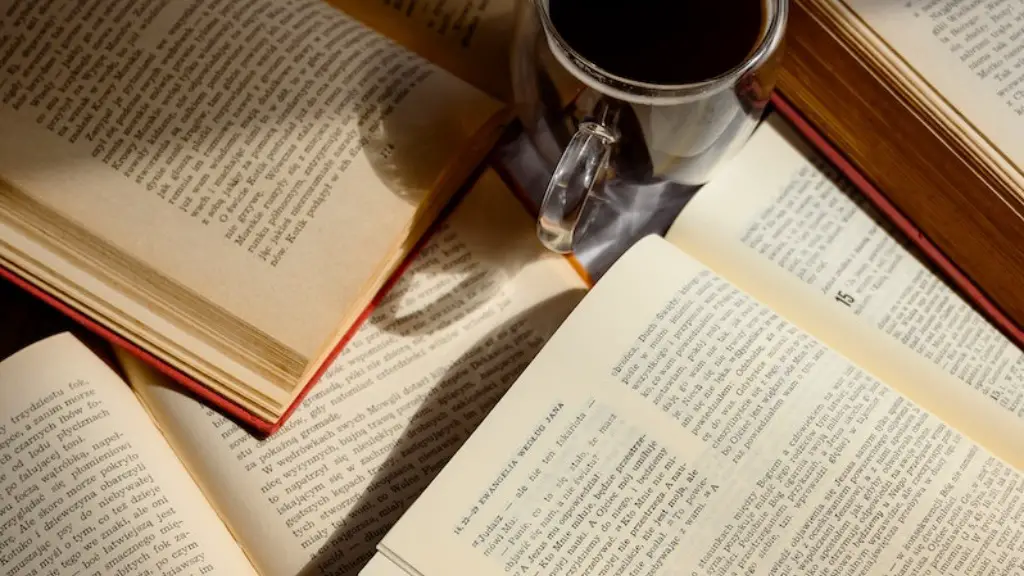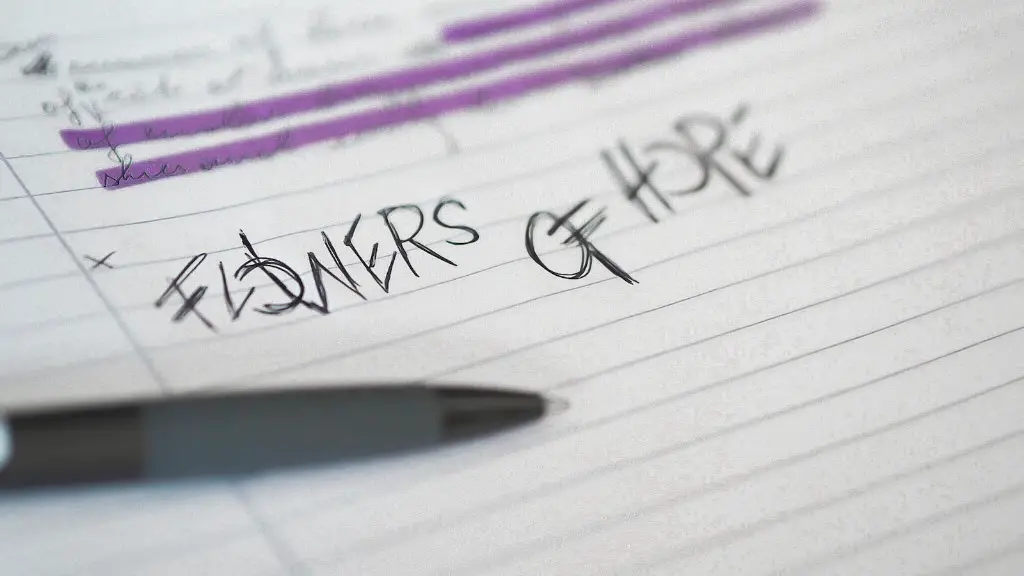Lyric Poetry
Lyric poetry is one of the various types of poetry. It is often known as the most personable type of poetry as it is based on the poet’s experience, expressing personal emotions. Lyric poetry is written in an expressive, spontaneous style and is not bound by any meter, rhyme or form. This type of poetry usually consists of a single stanza with four or more lines. The lines are usually related and they are typically organized with an abc format.
Though it is traditionally written in first person, poets also have the freedom to experiment with their writing styles, using a variety of emotions, thoughts, and ideas. Many lyric poets use metaphors and imagery, as well as poetic devices such as alliteration, personification, and assonance to emphasize their ideas and lend their words more impact. Lyric poets utilize common literary devices to convey their message and transform their writing into beautiful verbal art.
Some of the most famous lyric poets include William Wordsworth, Robert Frost, and Emily Dickinson. These celebrated poets embody the style, tone, and shapes of lyric poetry. As one of the oldest forms of poetry, lyric poems are composed to express personal emotions in a musical and lyrical manner.
Narrative Poetry
Narrative poetry is the second type of poetry. This form of poetry tells a story, recounting an event, experience or situation. Narrative poems usually contain a central plot, with a protagonist and a conflict they attempt to resolve. It is often used to express the poet’s feelings towards a subject or to provide a moral lesson to its readers.
Narrative poetry can be divided into two categories, epic and ballad. Epic poems tell a long story, usually including heroic characters and relaying an entire adventure. Examples of epic poems include Homer’s Odyssey, Dante’s Inferno, Virgil’s Aenid, and Milton’s Paradise Lost. Ballads, on the other hand, are shorter and often include a refrain. Examples of ballad poetry include John Keats’ La Belle Dame Sans Merci, Robert Burns’ A Red, Red Rose, and William Butler Yeats’ The Ragged Wood.
Narrative poetry is often very vivid in its details and includes imagery, metaphor, and figurative language to bring its stories to life. It conveys moral messages and is known for having the potential to capture audiences with its creative flair and beauty.
Dramatic Poetry
Dramatic poetry is the third type of poetry. This form of poetry is characterized by its dramatic tone and structure. It is written in the form of a script, using characters and a narrator to express an opinion or reflect upon the poet’s experiences. Dramatic poetry often includes dialogue, monologues, and soliloquies by the various characters, allowing their thoughts and ideas to be expressed.
Unlike other types of poetry, dramatic poetry often contains sections of prose or blank verse. The narrative is usually divided into acts and scenes, usually focusing on a single idea or thought. This style of poetry was particularly popular in the Elizabethan period and was used to express emotions and reflect upon important contemporary issues.
Some of the most renowned dramatic poets are William Shakespeare, John Donne, John Milton, and William Butler Yeats. These poets have composed some of the most beautiful and enduring works of poetic literature. In their masterpieces, they have touched upon themes such as love, politics, religion, and mortality.
Examples of Poetry
Lyric poetry is one of the oldest forms of poetic expression and its origins can be traced back to ancient Greece. Examples of lyric poetry include William Wordsworth’s “The Daffodils”, Robert Frost’s “Stopping by Woods on a Snowy Evening”, and Emily Dickinson’s “Hope is the Thing with Feathers”.
Narrative poetry is a type of poetry that tell stories. Some of the greatest examples include Homer’s Odyssey, Dante Alighieri’s Inferno, Virgil’s Aenid, and John Keats’ La Belle Dame Sans Merci.
Dramatic poetry is a form of poetry that focuses on characters, scenes, and dialogue. Examples of this type of poetry include John Donne’s “The Flea”, John Milton’s “Lycidas”, William Shakespeare’s The Merchant of Venice and Macbeth, and William Butler Yeates’ “The Second Coming”.
Traditional Structures and Rhymes of Poetry
A variety of traditional structures and rhymes have been used by poets to achieve specific effects. Many composers, from Homer to Shakespeare, have used common rhyme schemes such as aabb, abab, and abcb. They have also utilized particular meters, such as iambic pentameter, to emphasize their words and give their ideas more power.
Most lyric poetry is not bound by any specific rhyme scheme or meter, though a poet may employ these techniques in their work if they choose to do so. Narrative and dramatic poems, however, are often written in blank verse and may incorporate a specific rhyme scheme or meter.
Conventions of Poetry
Poets often use particular conventions that have been used throughout history to give their works more significance and appeal. For example, metaphors and similes are utilized to compare one thing to another, often creating powerful images with simple words. Alliteration is often used to emphasize the sounds of the words and create a better flow. Repetition of words or phrases can also highlight a description or point.
Poets also often incorporate poetic devices such as personification, oxymoron, assonance, and paradox in their works. These figures of speech add an extra layer of meaning and make the poem more memorable and enjoyable.
Impact of Poetry
Poetry has a long history and has a power to leave a lasting impression on many people for ages. It is often used to spread awareness and influence people’s thoughts and beliefs. In addition, it can be seen as a form of therapy, helping people to express and reflect upon their emotions and experiences.
With its lyrical beauty, varied structures, and meaningful themes, poetry continues to captivate and inspire readers of all ages. As one of the oldest art forms, it remains an important part of our culture and an essential form of literature.
Modern Poetry
Modern poetry has evolved considerably since its classical roots and has taken on many new forms and styles. Contemporary poets have embraced a variety of techniques and poetic conventions, often pushing the boundaries of the genre.
Haiku, free verse, concrete poems, stream-of-consciousness, and other forms of innovative poetry have become increasingly popular in our era. Popular poets such as Seamus Heaney, Derek Walcott, Maya Angelou, and Langston Hughes are praised for their use of unconventional techniques to convey their messages.
With the rise of technology, modern poets have been quick to incorporate digital media into their works. In this age of YouTube, Instagram, and other social networking sites, poets are now able to share their works with a wider audience.
Benefits of Poetry
The beauty of poetry lies in its ability to inspire, comfort and motivate. As an expressive art form, poetry can stimulate one’s imagination and challenge the mind. It encourages creativity and encourages critical thinking, helping readers to interpret the words in a unique way. It also promotes the use of language and allows readers to explore different perspectives and ideas.
Moreover, poetry helps people to express their emotions and experiences in a safe and constructive way. It offers an emotional outlet, allowing people to explore difficult emotions in a positive manner. By offering a platform for self-reflection, it encourages individuals to think deeply and gain greater understanding of their experiences.
Poetry is also a great source of entertainment and can be used to relax and unwind. Its lyrical quality and use of figurative language help to create a unique and enjoyable experience. Thus, it can make tough topics more enjoyable to digest and help people to appreciate the beauty of the written word.
Poetry in Education
In addition to providing a creative outlet, poetry is an important part of our education system. By incorporating poetry into the curriculum, educators can help students to build their literacy skills and broaden their knowledge. Through the study of poetry, students can gain an appreciation for language and cultivate an interest in literature and the arts.
Poetry has also been found to be beneficial in increasing students’ self-confidence, improving their writing and critical thinking skills, and boosting their academic performance. Additionally, it can be used to introduce new themes and concepts, as well as developing their linguistic proficiency.
Poetry can also be a great source of inspiration for young people, encouraging them to develop their own unique writing style and become leaders in their field. Together, these benefits highlight the importance of poetry in our education system and its potential for inspiring and motivating future generations.
Role of Poetry in Society
Poetry has been and continues to be an important part of our culture. It is often used to comment on important issues and express powerful emotions. In countries where free speech is diminished, poets often have the courage to speak up and voice their concerns. Through their work, they can shine a light on important topics and bring to the attention of others the injustices of the world.
Furthermore, poetry can often act as a motivator, unifying people and inspiring them to unite in a common cause. It can be a powerful tool for raising awareness and prompting people to become more active in social and political movements.
In conclusion, poetry is an important part of our cultural heritage and continues to be an integral part of our society today. Its varied forms, styles, and conventions offer many possibilities for the expression of emotion, thought, and knowledge. Through the power of the written word, poets are able to reach new heights and provoke meaningful conversations in our modern world.


